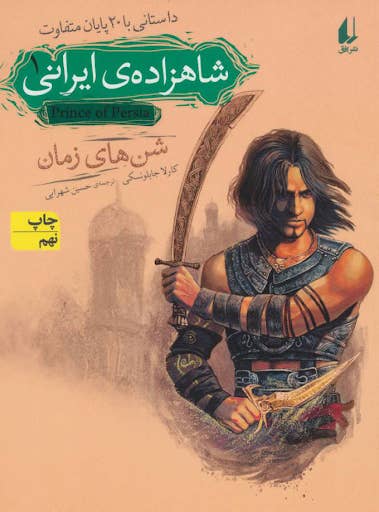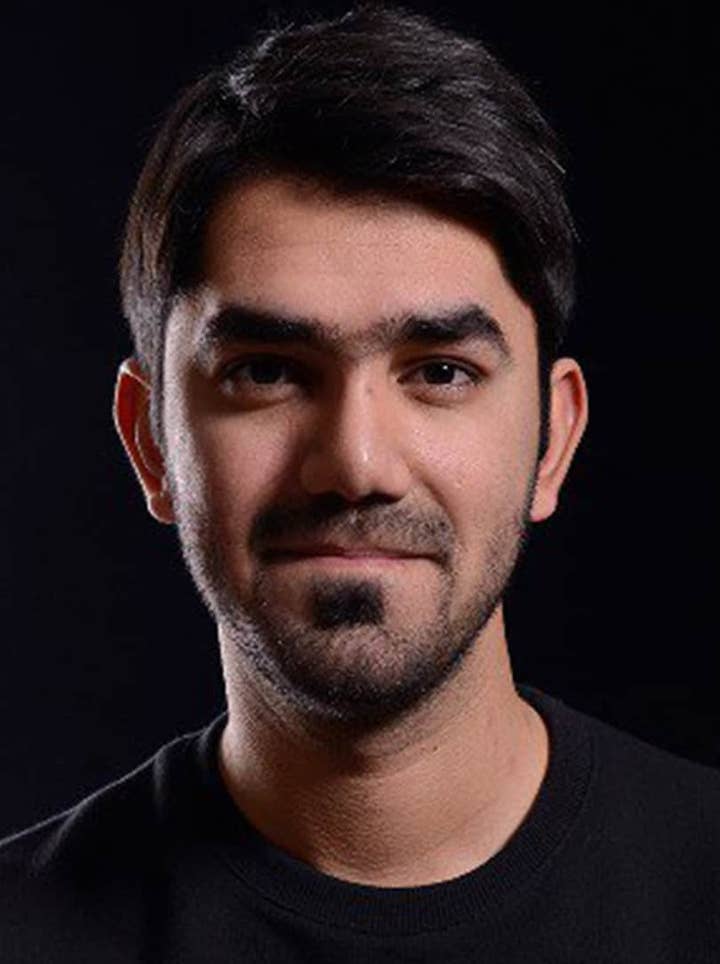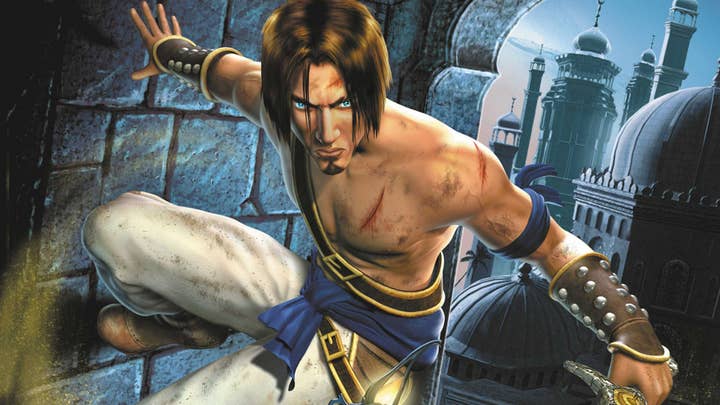Persia and its Controversial Prince: How the series has influenced Iranian developers
Developers from the Prince of Persia's homeland discuss the local controversy around the long-running character
In 2003, the release of Prince of Persia: The Sands of Time attracted an unusual amount of attention from Iranians.
The early 2000s was a time when digital games were becoming increasingly popular in Iran. The first video game publication, Bazi Rayane, was released in 2001, and more magazines and video game studios were founded in the following years.
Therefore, it was inevitable for Iranians to respond to a game that was supposedly about them.
This might sound a bit odd to those who are not familiar with the terminological relationship between Persia and Iran, which has caused numerous miscommunications and misunderstandings.

Prince of Persia or Iran
Prince of Persia is widely known in Iran as شاهزادهی ایران, which translates to the ‘Prince of Iran.' The direct translation of the title would be شاهزادهی فارس, which means ‘a Prince who belongs to the province of Pars or Persia.' However, Iranians and other Persian-speaking people are well aware of the fact that Westerners use the term Pars and its Latin shapes, such as Persia (English) or Perse (French), to describe what is known to us as Iran.
Persians have historically been the dominant ethnic group in Iran, and their dynasties are some of the most well-known worldwide. This is why Westerners have used "Persians" and "Persia" to talk about all Iranians and Iran. (Please don’t feel bad about it if you use the term Persia; we also used to refer to all Europeans as "Farangi" because we thought all of them were Franks. To this day, we call Western-style toilets "Toilette Farangi.")
So, to put it plainly, Persia and Iran are the same.
Who is the Prince?

In 2005, I borrowed a copy of Ubisoft’s Prince of Persia trilogy from a classmate and eagerly started to play it to experience a game about my own culture — or at least something closely related to it. My mother, a historian, also became invested in the series, even though she rarely paid much attention to digital games.
The first thing my mother and I did was to try to determine the Prince's identity. Eventually, she realized that the game was loosely inspired by Ferdowsi’s The Book of Kings and other similar tales such as One Thousand and One Nights rather than directly adapting any famous Persian story or historical events. We were both impressed by the series’ presentation and characters, and we were pleasantly surprised when we noticed Persian elements throughout the games.
This experience with my mother stayed with me for a long time and motivated me to write this piece.
The vagueness of Prince of Persia was one of the main causes of controversy and also one of its strengths. This phenomenon is solidified metaphorically in the Prince’s nebulous identity. We can track this nebulousness to Jordan Mancher, the Prince’s original creator. He said that his inspiration for the modern Prince was Ferdowsi’s The Book of Kings. However, he was unable to entirely remove the influences of the original Prince, who was mainly created by Western representations of the Middle East, such as the Indiana Jones films.
The Prince’s conflicting character is mirrored in the responses it received from Persian-speaking people.
The Dark Prince and his other self
During the peak of the series’ popularity in Iran, Mashregh News, a well-known Persian-speaking news website, published an article titled ‘Prince of Persia’s ahistoricitism and blasphemies’. The article lays out a detailed criticism of the video game series from a conservative point of view and condemns it as a propaganda piece against Iranian interests.

Mashregh News attributes the nebulousness of the Prince’s identity to mischievous attempts made by the West to present ancient Persia as Anti-Persian; the author argues that the developers intentionally wanted to convey anti-Iranian and anti-Islamic sentiments to the players.
"[In the game], you are forced to destroy jars and other precious Persian artifacts to gain points and become stronger." This is an example of the ridiculous lengths the article was willing to take to prove its point.
Mashregh News wasn’t alone in its harsh response to the Prince of Persia. In 2011, when the Prince of Persia movie was released, numerous journalists, critics, and people in the media responded very negatively.
Tebyan Cultural Institute published an article in which the Prince of Persia: The Sands of Time was described as a part of the West’s cold war against Iran. A cultural cold war that was seen to be apparent by many Iranians due to the media representation of the country in the mid-2000s and early 2010s. Battlefield 3, Zack Snyder’s 300, and Oliver Stone’s Alexander are prime examples of what was perceived as an attack on Iran.

That being said the majority of Iranian gamers seem to have enjoyed the Prince of Persia games and didn’t perceive the franchise as propaganda or political piece. This is very evident when you search Google for Prince of Persia in Persian. From the mid-2000s to this day, Iranians have been thinking and writing about the series. This is not surprising because historically, it has been one of the very few international titles that represent them as the protagonist of a story.
Much like the conflicting Prince of the Two Thrones, a dichotomic image of the game series exists in Iran, which has influenced many. This influence shouldn’t be understated since it inspired generations of Iranian gamers who then became game developers themselves.
The Prince’s influence on Persia
To track the Prince of Persia’s influence on Iran’s video game industry, we can go back to the first 3D Iranian video game trilogy, the Quest of Persia. This series of games about Persian kings of the past has been described by bloggers and outlets as inspired by the Prince of Persia titles - particularly Lotfali Khan Zand and Nadir’s Blade.
To examine Iranian video game developers’ relationship with the Prince, it’s worth taking a closer look at two notable games from two different generations that were inspired by the franchise: 2011’s Garshasp: The Monster Slayer and 2022’s Tale of Bistun.
Garshasp: The Monster Slayer was originally developed under the name Soshiant by the Iranian company Fanafzar and was released in 2011. Upon its release, the game was compared heavily to Prince of Persia by Iranian outlets.
It might not be an unfair comparison since the director of the game, Amir H. Fassihi, says: "In the early stages of the development, Prince of Persia was a notable source of inspiration for us."

"I really like Prince of Persia, and I find the developers' decision to portray eastern cultures quite fascinating."
Fassihi went on to say that, despite his love for the series, he thinks Prince of Persia wasn’t particularly Persian, and it felt more like a One Thousand and One Nights tale.
Garshasp’s writer Arman Arian -- who was not impressed with the end result of the game and claims that his script was butchered in the process - did not share Fassihi’s love for Prince of Persia.
"I grew up with the series, and I remember playing the very first titles from the ‘90s. However, Prince of Persia was never my favorite game; even though I love the genre, I always had a hard time enjoying it. God of War, for example, was the type of mythological action title I always went back to, but the Prince of Persia developers’ disinterest in learning more about Persian culture also made me disinterested in their games.
"Persia in these games is shown to be an incoherent mix of pre-Islamic Persia, India, the Islamic caliphates, seleucid Iran, and more. It is sort of like a One Thousand and One Nights story, and while interesting by itself, I think the series could have been more beautiful and coherent if it was about a particular period in Persian history."
By contrast, the developers of modern Assassin’s Creed games spent a noticeable amount of resources and time to portray the historical settings accurately - to the point that they are used in educational programs for students.

Although the developers of Garshasp: The Monster Slayer have different views on Prince of Persia, it’s safe to say that they all see it as a shallow take on Persian culture and history. This is very interesting since Jordan Mencher has mentioned that his research was specifically on Persia and its literature, such as Rumi, Ferdowsi, and Ibn Battuta.
Nonetheless, the end result for Iranians, for the most part at least, doesn’t feel Persian. Mostafa Beikmorad, a producer at Dead Mage, says that there are many aspects of Prince of Persia games that remind him of Iran, such as Persian names, phrases and language, Islamic architecture, and so on. But he never felt like he was playing a Persian character in a Persian environment.
In July of 2022, Amin Shahidi released his first indie title on Steam and Microsoft platforms titled Tale of Bistun, a gorgeous-looking game inspired by Persian mythologies.
Shahidi says that the developers of the game all loved Prince of Persia, and it was one of the reasons they tried to make a game that better represented Persian mythology and culture.
He adds: "Prince of Persia is one of my favorite games ever. When Ubisoft’s Prince of Persia was released, I fell in love with it both in terms of gameplay and aesthetics. While I always loved the series and its references to Iran, I wished for a title that was more closely related to our culture and literature, which is what we have tried to achieve in Tale of Bistun."

BaziCenter, a notable Persian-speaking website, described Tale of Bistun as a beautiful retelling of a love story that is still fresh. Many other Iranian online magazines praised the game for its adaptation of Nizami’s Khosrow and Shirin poem, which itself was a retelling of a much older historical tale. The positive responses suggest Shahidi should be pleased with the result of his mission of creating a truly Persian title.
Prince of Persia’s influence on Iran and, specifically, Iran’s video game industry is irrefutably strong and almost congenital. Iranian developers with different views and impressions have been inspired by the series to produce their own games that bring Persian culture and literature to life.
Obviously, due to sanctions and political circumstances, it hasn’t been easy for them to do what they have always been dreaming about. However, the future seems bright for Iran’s video game industry and, inevitably, the representation of Persia.
Will the upcoming Prince of Persia Remake inspire a new generation of Iranian developers? Or perhaps an Iranian game might eventually take that place.

